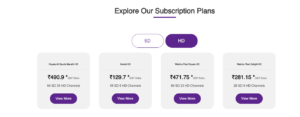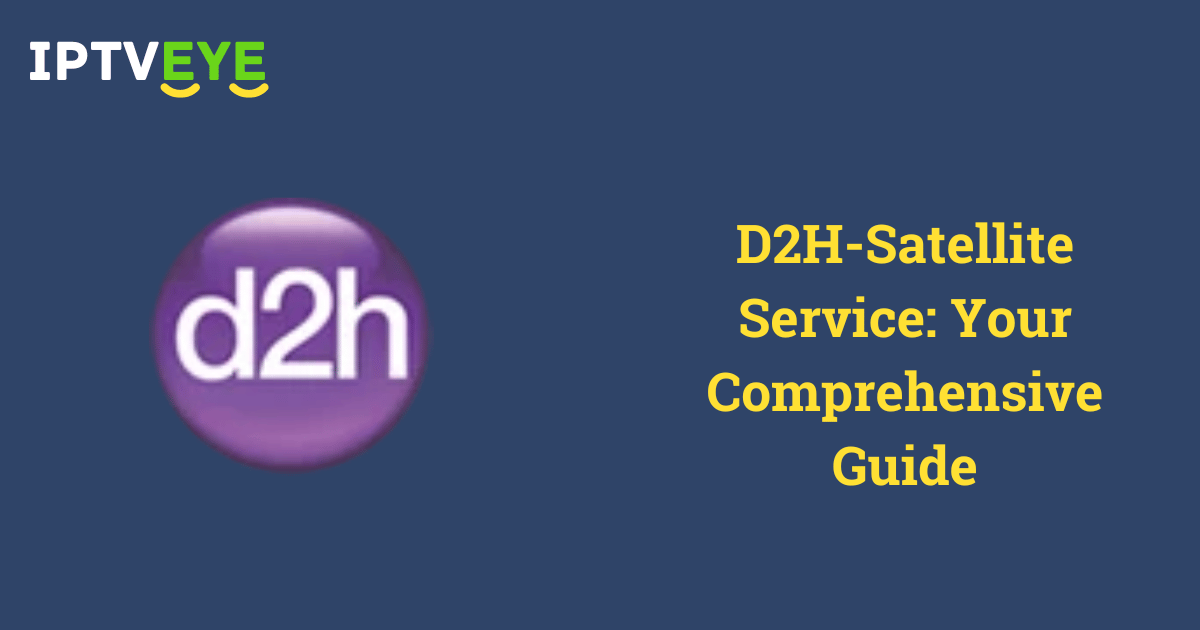Overview
D2H (Direct-to-Home) satellite service is a broadcasting method that delivers television programming directly to households via satellite transmissions. The service allows customers to receive channels without the need for traditional cable connections, offering high-definition picture quality, access to numerous channels, and added features like on-demand content. With the rise of digital and HD broadcasting, D2H services have gained immense popularity due to their high quality and flexibility.
D2H services are widely used across various regions, especially where traditional cable TV and iptv services face infrastructure limitations. It is popular for providing superior picture and sound quality, extensive channel selection, and value-added services like digital video recording (DVR) and interactive TV features.
How to Use D2H
- Purchase a D2H set-top box: First, choose a service provider and purchase a compatible D2H set-top box. Most providers offer various types of set-top boxes, ranging from basic to HD, 4K, or DVR-enabled boxes.
- Install the satellite dish: The service provider usually installs a satellite dish on your rooftop or balcony, pointing it towards the satellite’s direction to ensure a clear signal.
- Connect the set-top box: Link the set-top box to your television via HDMI or AV cables, depending on the type of TV.
- Activate the service: Activate your D2H service by contacting the service provider through phone or online, providing your set-top box’s ID and completing the necessary setup steps.
- Channel selection and subscription: Choose a channel package based on your preferences. Most providers offer packages catering to different genres like sports, entertainment, movies, and news.
- Remote Control and Navigation: Use the remote control to browse channels, access on-demand services, and manage your subscription.
How Does D2H Work?
D2H services work by transmitting digital signals from broadcast centers to satellites orbiting the Earth. These satellites then beam the signals back to the individual satellite dishes installed at subscriber homes. The dish receives these signals and sends them to the set-top box, which decodes them for viewing on your TV. Unlike cable systems that rely on wired connections, D2H relies on a direct satellite link, providing a more reliable signal and often better picture quality, especially in remote areas.
The key components in a D2H system include:
- Satellite Dish: Receives signals from satellites.
- Set-Top Box (STB): Decodes satellite signals for viewing.
- Satellite Transponder: Located on satellites, responsible for transmitting signals from broadcasters to viewers’ dishes.
- Broadcast Center: The starting point of transmission where channels are broadcast to the satellite.
Key Features of D2H:
- High-Definition (HD) and 4K Content: Offers crystal-clear video and audio quality.
- Wide Range of Channels: D2H services provide access to a vast selection of channels, including regional, national, and international channels.
- Interactive TV: Features like on-demand video, gaming, and interactive voting.
- Digital Video Recording (DVR): Record shows, pause live TV, and schedule recordings.
- Multi-Language Support: Allows viewers to watch channels in various languages.
- Electronic Program Guide (EPG): A user-friendly guide to browse upcoming programs.
- Customer Customization: Subscribers can choose packages tailored to their preferences.
- Weather-resistant Reception: While occasional disruptions happen, the technology is built to withstand most weather conditions.
Pros
- Superior Picture Quality: High-definition channels and 4K support deliver excellent visual clarity.
- Extensive Channel Variety: Access to hundreds of channels, including specialized ones.
- No Dependency on Cable Infrastructure: Ideal for remote or rural areas.
- On-Demand and DVR Features: Enhanced user experience with content available at your convenience.
- Multiple Language Options: Suitable for diverse audiences.
Cons
- Weather Interference: Signals may get disrupted during extreme weather like heavy rain or storms.
- Installation Hassle: Requires setting up a satellite dish which might be challenging in certain living spaces.
- Initial Setup Cost: The cost of purchasing a set-top box and satellite dish can be high.
- Limited Internet Integration: Some D2H systems lack advanced integration with streaming services compared to IPTV.
- Maintenance: The satellite dish and set-top box may require occasional maintenance or upgrades.
Price
The price of D2H services varies depending on the provider, the type of set-top box, and the subscription package selected. Here’s an estimated price breakdown:
- Set-Top Box Cost: $20 – $150, depending on whether it’s a basic, HD, 4K, or DVR-enabled box.
- Installation Cost: Typically included in the price of the set-top box but may range from $30 – $100.
- Subscription Packages: $10 – $50 per month, depending on the number of channels and services included.

Note: Prices vary depending on location, provider, and package selected.
Conclusion
D2H has revolutionized how people access television by providing superior picture quality, wide channel selection, and added convenience features like on-demand content and DVR. It’s particularly valuable in areas without traditional cable infrastructure. While it has some limitations like weather disruptions and installation complexity, the pros far outweigh the cons for those seeking a high-quality and diverse television experience. Overall, D2H continues to be a popular choice for modern IPTV viewing.
FAQs
